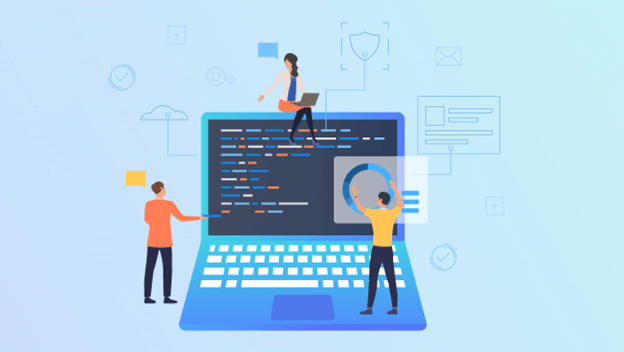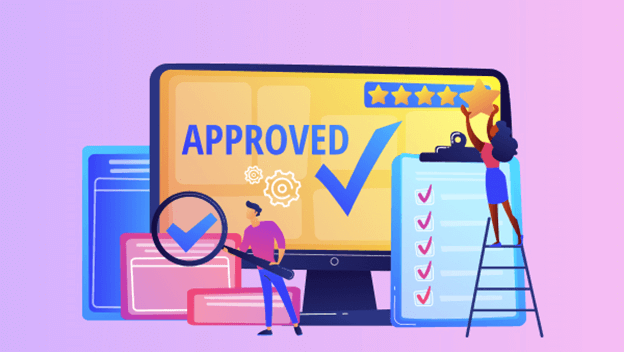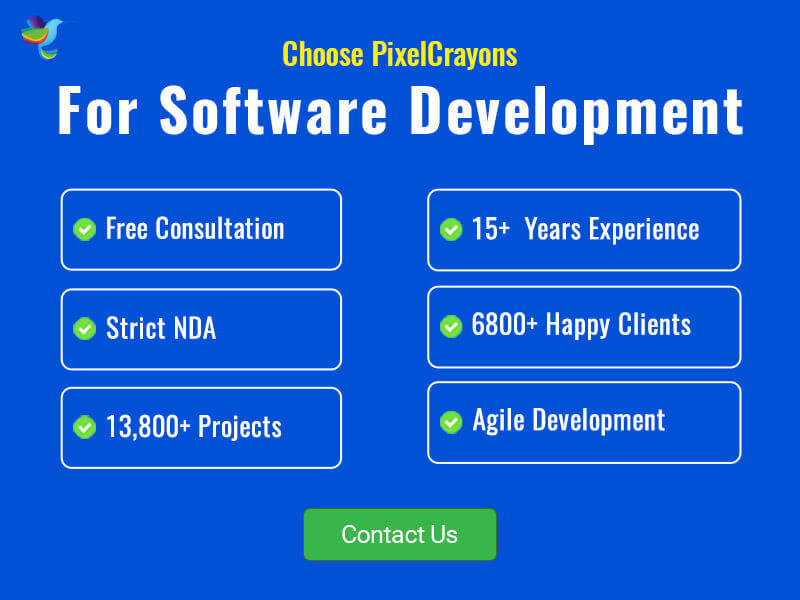Software development constitutes a billion-dollar industry worldwide and software development life cycle has become one of the most common practices for big billion sectors, SMEs, entrepreneurs, etc. Its immense benefits combined with ease and convenience attracts investment from diverse industry verticals.
However, most investors lack the information necessary to gain insights and advanced control over the project. The software development life cycle involves tons of aspects and crucial decisions. Although most of them are done by the development team, you as an investor can save cost and ensure sky soaring success when actively involved with the project.
This article will discuss the following aspects of the software development life cycle to clear your queries.
- Definition and reasons for choosing SDLC (Software Development Life Cycle).
- 7 stages of SDLC
- Each stage in detail
- Best SDLC models to follow
Let us begin with our first point.
Table of Contents
What is Software Development Life Cycle/SDLC?
The SDLC or software development life cycle can be best defined as a systematic process and protocols that ensure the development of a smooth working software with all the necessary and additional features and an intuitive user interface.
The cycle ensures that the ultimate digital product fulfills the client’s & development team’s expectations by executing planned functionalities, speed, performance, etc., done during the different phases of the SDLC.
The cycle starts with collecting ideas for the final product and ends with deploying the absolute software. However, the maintenance phase continues for the entire life to keep it updated with the latest technology and tools.
Have a look at the 7 Stages of Software Development Life cycle (SDLC)
- Ideation/Requirements Collection Stage
- Feasibility study of the project
- Designing Stage of the software
- Coding of the software
- Quality Assurance & Testing of the software
- Deployment of the final software
- Maintenance stage
Let us study each of these stages in detail.
Stage-1: Ideation or Requirements Collection Phase
The first stage of the SDLC mainly involves a detailed discussion between the project leader and the investment firm. As a client, you must communicate your issues or pain areas in which you are investing. Based on the detailed discussion, a rough outlook of the final software gets developed.
The project leader further communicates with the final users, industry leaders, etc., to gain insights into the software’s principle and additional features. A significant deal of research is done to find and add innovative features to the project in this phase.
Thus, essential aspects of the software development project like the proposed features, functionalities, etc., are realized. However, the team finalizes them in the feasibility stage.
Stage-2: Feasibility Assertion Phase
Once done with the stage of ideation, the project enters into the feasibility stage and is judged on the following factors to find its feasibility.
- Features Integration: If the software involves new and innovative features integration, the team looks for compatible technology, stacks, etc., and realizes whether they can be achieved or has to be dropped.
- Project Time: Based on the complexity level, the panel of experts realizes the time frame within which it can be delivered to the client and conveys the same.
- Project Budget: Depending upon the planned features and expected total working hours, the project gets checked under the budget constraints.
- Legal constraints: As software caters to universal consumers, the offered features’ legalities are checked against concerned nations for which it is getting designed.
Stage-3: The Designing Phase of the SDLC
This stage of the software development life cycle is all about preparing the framework or the software’s exterior designs. An experienced team of designers is handed over the task in the form of a document that contains all the required specifications (called RSD) either in HLD or LLD format.
|
High Level Design (HLD) document |
Low Level Design (LLD) document |
|
It contains identity and description of all the modules. |
It has a functional description of all the modules. |
|
Offers detailed relationship between diverse modules |
Offer details focused on the interface. |
|
Employs architectural diagrams and technology details |
Employs database tables for the designing team to understand and work. |
The expert team of professionals carries out the daunting task of designing based on the RSD. The color combinations, font size, logo placement, CTAs (if any) are all accomplished such as they resonate with the investing firm and core features.
Stage-4: Coding Phase of the Software
The coding phase of the SDLC is all about a team of experienced developers giving life to the designed product. The development team writes code either from scratch or relies on frameworks to speed up the process. The most prolonged phase of the software development life cycle gets done in the preplanned programming language.
Stage-5: Quality Assurance and Testing of the developed product
Once the developer’s team completes the software’s coding, it gets checked for bugs and issues by a panel of testers. The quality assurance team ensures that the developed software successfully meets the promised features.
In case of any detected issues, errors, bugs, etc., the quality assurance team conveys it to the concerned developers for debugging of the software. As testing is crucial for identifying the undetected bugs, let’s briefly look at the different ways in which it is performed.
- Unit Testing: Each module or group of interconnected modules gets tested for expected outcomes.
- Regression Testing: IT is performed with the integration of each new module.
- Alpha Testing: The developed software is tested for all possible bugs and errors.
- Beta testing: The software is released for a limited number of users to check its real application performance.
Performance testing, Object-oriented testing, etc., are also standard ways of detecting bugs in the software.
Stage-6: Deployment of the final software
When finally passed by the development team, the software is released into the user’s hand. Despite the quality assurance, the developed digital product may exhibit undetected bugs at this stage. Thus, the next stage is all about clients’ delight by improving the software performance.
Stage-7: Maintenance phase of the software
Based on the client’s feedback and software performance, the development team performs maintenance of the software in the following ways:
- Debugging any detected flaws.
- Integrating additional features to improve the performance of the software.
- Upgrading the software for the updated platforms.
The maintenance of the software depends upon the development of firm policies and contracts signed. Ideally, investing firms should opt for a minimum of 3 months of maintenance time to avoid any additional charges for updating the software.
By now, you must have gained good command over the software development life cycle. However, do you know about the popular SDLC models that a custom application development firm follows?
Here’s a list of the top 5 SDLC models
1. The Waterfall Model for Well-defined projects
The waterfall is the oldest and one of the most widely used Software development lifecycle model. Also called the linear sequential model, it is the simplest in form. The end result of each phase in the waterfall model acts as an input for the next stage.
Pros of the Waterfall Model
- The model involves documentation in every phase, and thus integration of new members in the team is smooth.
- Monitoring progress is convenient as the end results of the individual phase are pre-determined.
- The overall cost of development suffers from little to zero variation.
- What you plan is what you get in this model as the final software is predefined with basic and additional features.
Cons of Waterfall Model
- Any modification may require additional efforts as flexibility is less in this model.
- Comparatively slow model and requires more extended time in development.
Ideal for: Projects with zero ambiguity and well-defined outcomes.
2. V-Model for saving testing time
Like the waterfall model, the V-model follows the same phase execution method, except the testing phase is conducted in parallel at completing each stage. Thus, it helps in the project’s rapid development as one of the steps continues in parallel.
Pros of the V-Model
- Simple to use model.
- Requires lesser time for project completion.
- Flaws/bugs get eliminated in each phase.
- Enhances the success rate of the project.
Cons of the V-Model
- This model is more rigid as compared to the Waterfall model
- Midway modification requires re-testing.
Ideal for: Small to Medium size projects.
3. Agile Model for quick implementation of modifications
The agile model involves breaking up the project into smaller builds and divide them into different teams. Each team builds up the smaller builds, which follows the complete SDLC path and releases them. Thus, it has features similar to the incremental model, except here, each release is built on the previous functionality.
Pros of the Agile Model
- Delivery of the software into smaller units.
- Open to quick modifications based on the user’s response.
- An intuitive user interface can be achieved even for totally new projects.
- Less time is required in project completion.
Cons of the Agile Model
- Lack of documentation.
- Difficult for the team with novice engineers and coders.
Ideal for: Projects that need to be built on user’s response/feedback or final outlook is not clear.
4. Spiral Model for in-depth risk Analysis
The spiral model is like the incremental model but has a greater focus on the software development project’s risk analysis. The model has four main phases (planning, risk, development, and evaluation) through which the software passes repeatedly, and thus the term spirals.
Pros of the Spiral Model
- Greater addressing of risk elimination.
- Easy to integrate modifications.
- Significant control over the project documentation.
- Saves time in overall project delivery.
Cons of the Spiral Model
- Requires significant expertise in the domain.
- Costlier option.
Ideal for: Projects with complicated features that pose risks.
5. Prototype Model for Complicated Systems
The prototype model is based on the idea that software development projects require user feedback for offering a wholesome feeling to the users. In this model, a simple prototype with the software’s planned outlook is offered to a target audience. From the feedback of the users, the software is then modified.
Pros of the Prototype Model
- Active participation of the target audience of the software.
- Quick detection of flaws.
- A high UI is convenient to achieve
- Can easily integrate the additional features.
Cons of the Prototype Model
- It increases the cost of the project.
- May complex the ultimate solution.
Ideal for: Projects looking to achieve high UI
Final Words
That was all about the software development life cycle and its popular models. If you are looking for amazing custom software development services, connect for a free consultation at your convenience.








